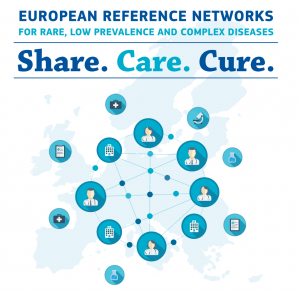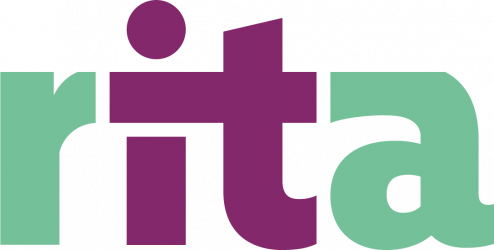WHAT IS AN ERN?
 European Reference Networks (ERN) are networks involving healthcare providers across the European Union. They aim at tackling complex or rare medical diseases or conditions that require highly specialised treatment and a concentration of knowledge and resources. To review a patient’s diagnosis and treatment, ERN coordinators convene a advisory board of medical specialists and expert patients across different disciplines, using a dedicated IT platform and telemedicine tools. Thus it is the medical knowledge and expertise that travel rather than the patients, who have the comfort of staying in their supportive home environments.
European Reference Networks (ERN) are networks involving healthcare providers across the European Union. They aim at tackling complex or rare medical diseases or conditions that require highly specialised treatment and a concentration of knowledge and resources. To review a patient’s diagnosis and treatment, ERN coordinators convene a advisory board of medical specialists and expert patients across different disciplines, using a dedicated IT platform and telemedicine tools. Thus it is the medical knowledge and expertise that travel rather than the patients, who have the comfort of staying in their supportive home environments.
HOW WILL ERNS HELP PATIENTS?
 Around 8,000 rare diseases affect or will affect an estimated 30 million people in the European Union.
Around 8,000 rare diseases affect or will affect an estimated 30 million people in the European Union.
Many of these rare diseases cause chronic pain and suffering, and a number of them can be life-threatening. The negative impact on the quality of life of affected patients, both children and adults, is significant.
An unfortunate feature of rare diseases and complex conditions is the scarcity and fragmentation of specialist knowledge, which is often not available in the patient’s region or country. Many patients therefore do not find a satisfactory diagnosis for their symptoms and / or the necessary knowledge on treatment options. Consequently, many patients and their families rely on the internet to search for doctors and healthcare providers with the expertise to give them the best possible chance of survival.
By consolidating knowledge and expertise scattered across countries and promoting cooperation between centres, the ERNs will give healthcare providers access to a much larger pool of expertise. This will result in better chances for patients to receive an accurate diagnosis and advice on the best treatment for their specific condition.
ERNs are not directly accessible to individual patients
However, with the patients’ consent and in accordance with the rules of their national health system, patient cases can be referred to the relevant ERN member in their country by their healthcare provider.
Working together with Member States, the medical community and patient organisations, the Commission has taken a leading role to develop this unique ERN model: for the first time in healthcare, a formal structure of voluntary collaboration between healthcare providers across the EU has been created for the direct benefit of the patient.
The first wave of ERNs (2017) already covers the majority of disease groups, including bone disorders, haematological diseases, childhood cancer and immunodeficiency.
EUROPEAN COOPERATION

CROSS-BORDER HEALTHCARE DIRECTIVE
ERNs are being set up under the 2011 Directive on patients’ rights in cross-border healthcare. This Directive also makes it easier for patients to access information on healthcare and thus increase their treatment options.
INFORMATION ON CROSS-BORDER HEALTHCARE
Below several links can be found that contain information on patients’ exact rights:
Leaflet “Know before you go” on Patients’ Rights in Cross-Border Healthcare![]()
Videos on Patients’ Rights in Cross-Border Healthcare
Q&A on Patients’ Rights in Cross-Border Healthcare
The List of National Contact Points in Cross-border Healthcare![]()
